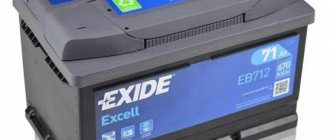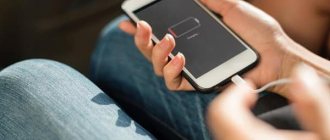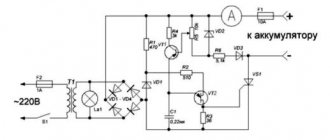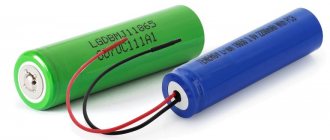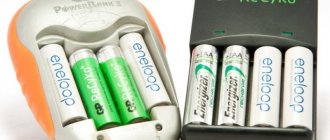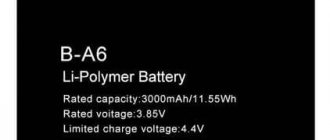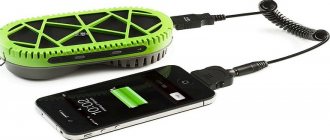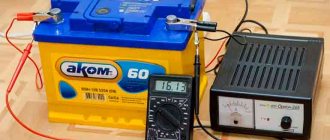09.05.2021
Do you need to know how to charge your phone correctly? At first glance, there is nothing to know. I inserted the cord into the phone, plugged it into the socket and you're done! But over time, the user notices that the phone has to be charged more often. This problem appears especially quickly on phones running Android. The battery on the iPhone lasts longer, but not every user can replace it themselves. Plus the battery itself will cost several times more.
The problem that the phone discharges faster over time is due to the fact that each battery model has a certain number of charge/discharge cycles. The cycles are affected by how many times energy was supplied through charging to the phone and how much you keep the charge of your smartphone at an average value.
That is, if you charge your phone not haphazardly, but correctly, you can increase the battery life. However, it is impossible to increase the battery life of your phone beyond that stated by the manufacturer.
For both iOS and Android devices, it is important to understand how to properly charge your phone so that the battery lasts longer. Let's figure out how to charge your phone correctly if:
- you bought a new phone;
- replaced the battery on the phone;
- The phone has been in use for some time now.
We’ll also tell you more about the phone’s charging/discharging cycles and how you can check them. Let's reveal the truth about Chinese charger manufacturers. Well, according to tradition, at the end of the article you will find advice from experts of the 100 Friends brand .
How to properly charge your phone if it's new?
When a person buys a new gadget for himself in the form of a smartphone, then almost the main thing he needs to know is how to charge the phone correctly the first time. After all, if you buy it and do not understand what capacity and type of element is installed, then there is a chance that the user will charge the new device incorrectly, which will result in severe wear and tear.
There are 2 types of batteries supplied from the factory:
- Lithium-ion;
- Lithium polymer.
They have no differences in everyday use, therefore, there is no need to worry about changing the principle of operation or anything else. If a person switches from a Li-Pol battery to Li-Ion, then nothing will change. And you don’t need to think about how to properly charge your phone with each of these types of batteries.
But sometimes people think that they need to charge gadgets until the “100%” mark appears next to the battery and discharge until the phone turns off completely
In some cases this is required, and someday it can even harm the battery in a smartphone. Therefore, you need to figure out how to properly charge a new smartphone.
Standard scenario
A person buys a smartphone, and then can simply charge it fully and use it as usual. No need to do any calibrations or anything else. That is, before sale, everything was done from the factory with the component installed in the smartphone. In view of this, the buyer receives a gadget completely ready for normal use.
The reason for the lack of calibration is that this has already been done at the factory. They not only assemble the devices, but also test the components to catch any problems early and fix them to avoid future problems. The factory uses recharge cycles for the battery, so you don’t have to think about how to properly charge your phone.
The calibration process itself goes like this:
- A man inserts an element into a smartphone;
- Charges the battery to maximum;
- Discharges it to 0%;
- Repeats several times for calibration to occur.
The important thing is that new smartphone models are delivered from the factory already calibrated. In view of this, deep discharge will not be allowed, which adversely affects the battery capacity and its operation.
Consequently, a person, having bought a mobile phone, can use it without problems - he has a working device with a calibrated battery. That is, you do not need to calibrate yourself. In this case, it will do more harm than good.
How to properly charge a phone with a new/replaced battery?
The case when the battery in a smartphone is replaced is different from buying a new phone. Here you need to use other knowledge in order to understand how to properly charge a phone with a new component.
The same applies to the course of action when a person independently changes the battery - it is not always and not everywhere calibrated.
The fact is that when assembling a smartphone at a factory, workers at the same time calibrate all components for further ease of use by the buyer. And those who collect nutritional elements for smartphones simply manufacture them. It is concluded that a person receives only a nutritional element.
The calibration process is no different from what is carried out at the factory. A person only needs to install a new battery and then check whether it is charged at all. When starting the device, it is important to pay attention to the charge indicator - you must wait until the very end. Then you should charge the gadget, and then perform a couple of recharge cycles.
It is also important to prevent deep discharge - this happens with devices and components that lie discharged in warehouses for a long time.
Therefore, during the purchase, in front of the seller, insert the battery into the phone and try to turn it on immediately. If the phone does not react at all, then the battery has been discharged for a long time. It's not worth buying such a battery.
Does fast charging damage the battery?
For regular charging, I chose wireless. There is a charging station in the office, at home, and even a special charging tray is built into the car. As a result, my smartphone is almost always fully charged. But it happens that I might be delayed somewhere or simply forget to charge my smartphone, and then fast wired charging comes to the rescue.
Nowadays, many smartphones support it and it should be actively used. This is completely safe, provided you use the original cable and power adapter. This way, charging will be as fast as possible, and there will be no risk to the battery at all.
This is what fast charging looks like for OnePlus.
It is worth understanding that fast charging has high power. This is what can damage the smartphone if something goes wrong. With original accessories everything should work as it should.
In some OnePlus and OPPO models, you can fully charge your smartphone in 30-35 minutes . It's very fast and you should use it.
How to properly charge your phone while in use?
When a person has already been using a smartphone for a long time - a couple of months have already passed since purchase - then you need to know several important points regarding charging the device. This, in fact, will allow people to extend the “life” of the battery, be it iPhone or Android, at least a little bit.
The first and most important thing is to not allow the battery to be deeply discharged. This phenomenon greatly reduces the maximum battery capacity.
That is, a person was using a gadget, after which the device was discharged, and then the user did not rush to charge it - this causes the loss of precious hundreds of mAh units in the battery.
There is also advice from experts regarding the recommended charge level. The fact is that if a person charges the device, starting from 0 to 10% and up to 100%, then the wear and tear over a year of operation will amaze the user. This will be as much as 30% of the maximum capacity declared by the manufacturer. If you keep the charge from 40 to 80%, then wear will decrease to 10% per year.
In general, a person does not need to worry about any special principles for charging a smartphone - one can use the gadget as the user is accustomed to without any problems. This is charging/discharging in free time and “delaying” the charge level at an average value.
Now you know how to charge your phone correctly. There is nothing supernatural about this. Let's summarize the main points:
- The new phone does not need to be calibrated - it has already been fully discharged and charged at the factory. User calibration will only do harm.
- Calibrate the charging of the smartphone on the replaced battery - here it is worth discharging to zero and charging the battery to 100% a couple of times.
- Do not buy a battery that is completely discharged in the store - we check it on the spot.
- Keeping your smartphone's charge in the range from 40% to 80% reduces battery wear.
- Do not keep your phone completely discharged for a long time.
Real example: we have a Nokia phone of the “log” model. That is, a push-button telephone with a small, non-color screen. They discharged the battery and put it to rest for a year. After a year, the battery was charged to 100%. As a result, the charge barely lasts for half a day if the phone is just left alone.
Now let's learn more about cycles and Chinese chargers.
Heat is the enemy of long battery life
Along with all of the above, temperature is also a key factor affecting battery longevity. As with high voltage, high temperatures stress the battery and cause it to lose capacity much faster than at low temperatures.
A cell at 25 to 30 degrees Celsius (77 to 86 degrees Fahrenheit) should retain about 80 percent of its capacity after the first year, even when cycling from full charge. Battery capacity will be higher than after a year if smaller periodic charging cycles are used. Increasing the temperature to 40°C (104°F) will cause the capacity to drop to 65% after the first year, and a battery temperature of 60°C (140°F) will reach this figure in just three months.
The ideal temperature to maximize battery life is between 20 and 45°C.
A battery that is in a fully charged state and exposed to high temperatures is the worst case scenario and the first thing to avoid when charging your phone. So don't leave your phone under your pillow to charge at night or turn on your car's dashboard on a hot day.
Fast charging technologies are a controversial issue as higher current and voltage can definitely cause the device to heat up while charging. Fast charging was never meant to be a full cycle charge, but instead it's a quick way to top up your phone and get it back in your hands.
Leaving the phone to fast charge for 15-20 minutes won't cause any major overheating issues, but I certainly don't recommend using it to charge overnight.
How many charge/discharge cycles does a standard phone battery have on average?
The service life of a battery is determined not only by the method of charging it and the principles that a person adheres to, but also by the stated guaranteed number of recharge cycles. If the battery has crossed the threshold of this number, then we can say that problems will begin in the near future. This could be a “glitch” with the charge indicator, increased wear, etc.
Technical documentation rarely writes about how many charge/discharge cycles a component is designed for. But we can say with confidence that this parameter has a value of several hundred. Laptops and other devices have the same thing, but they also have a larger battery, which is why the “life” of their batteries is longer.
As a rule, modern batteries can withstand a fairly large number of recharge cycles. This parameter ranges from 500 to 1000. But it all depends on whether the person knows how to charge the phone correctly. After all, if you do this ineptly, then the battery will not live up to the “warranty number” - the capacity will drop to a very low parameter value.
What is important to know about recharge cycles?
The most important thing is to understand how recharge cycles are read. If you charge from 0 to 100%, the system will count one cycle. And if 2 times from 40% to 80% - again, only 1, not 2. This will seem a little strange to users who do not know about this topic, so we will have to clarify this nuance.
The fact is that the system counts cycles based on the fact that a certain amount of mAh has been charged and discharged - depending on the capacity. In view of this, a person may periodically charge the device not completely, which is why the cycles will accumulate for a long time. Thus, it would seem that one can achieve a very long life.
But there is a small catch here - if a person often connects and disconnects the charger, then there is a chance of problems with the power controller. This problem can be easily solved - just carefully connect the charging cable to the device and do not pull it out sharply.
Overcharge
Overcharging a battery not only worsens its properties, but also often causes a fire.
However, all phones have universal protection against this - a built-in controller.
When a certain voltage is reached, it automatically turns off the power. The operating voltage of Li-ion batteries on smartphones is 3.5-4.2V.
That is, if U=4.3V or more appears on the battery, this is considered overcharged.
For lithium polymer sources this value is slightly different - 4.35V +/- 0.05V. Here >4.5V is already too much.
In a normal situation, you should not be afraid of overcharging; the controller protects against this and guarantees stable operation of the smartphone.
Based on this, it would seem that you can safely leave the phone on charge all night. But this is not always the case. Read why in a separate article.
A common question is: is it possible to charge a phone to 100%?
Of course you can, but keep in mind the most important point - if you charge the gadget each time not completely, but at least to 4.1 volts, then the number of charge-discharge cycles for the phone increases.
Whether this makes sense and how much it affects service life will be explained below.
However, this is precisely the reason for the widespread recommendation to charge the device to only 80%, and then unplug it from the outlet. At the same time, one hundred percent charging is the same 4.2V, and it fully corresponds to the comfortable voltage on the battery.
Therefore, do not listen to “experts” who talk about the accelerated degradation of smartphones from such charging.
This does not destroy the battery at all and completely allows it to fulfill its warranty period.
Is it possible to find out how many charging cycles a smartphone battery has and how to do it?
Some users worry that they don't know which nutrient is used up. After all, the more recharge cycles that have passed, the closer the “death” of the battery is. Thus, knowing the approximate number of recharge cycles, you can determine how soon you need to change the battery or you can wait.
Parameters can be set in the technical documentation included in the kit, but there is only an approximate value for the maximum number of recharge cycles. But a person needs to know how much battery life has already been used up after use. Therefore, simply looking at the required item in the documentation is not an option.
But there is still a way out of the situation. This is downloading special software from the Internet that collects information about the battery and provides it to the user. There are many options, but what they all have in common is that they collect the same information - battery wear, number of recharge cycles and battery charge/discharge status.
However, there is a lot of “junk” software, which means you can only waste time downloading and installing, and there will be no information (how many battery charging cycles). Therefore, it is recommended to choose the most popular options for battery information programs. The best of these are described below.
Programs for checking battery on Android
AccuBattery will be able to analyze the battery status and display the basic information needed for the Android device user. This will allow people to know about health (the difference between the maximum capacity from the factory and at the moment), session data (battery usage), as well as charging speed without any problems.
Kaspersky Battery Life is a similar utility. But it will better allow you to track programs that “eat up” most of the charge, which leads to rapid discharge. Also, there is an estimate of the remaining time on charge. A bonus is a menu in which the program displays information about the remaining time until fully charged.
Battery Care Pro is the best option out of these three. It will allow you to monitor battery voltage, temperature, charge level, “health”, as well as type (Li-Pol, Li-Ion). However, this program is software that requires you to purchase it in order to use it. Therefore, if you need such software, you will have to pay a little money (85 rubles) to Google Play.
There are a lot of different programs for checking the battery in the Android app store, but the ones described are the best options. Therefore, if you come across programs on Google Play that are not listed here, there is no need to rush to install them. Perhaps they do not provide any benefit and will be worse than the applications presented here.
Checking charge cycles on iOS devices
The question of how to find out how many charge cycles an iOS smartphone has has a simple answer. Unlike Android, there is a built-in utility right in the settings menu. It is possible to use it without connecting to the Internet and downloading additional software. Therefore, you can easily find out how many charging cycles your iPhone has already completed.
In order for everything to go well and a person to find out how much “health” his battery has, you can go to the “Battery” item. There will be an additional line that you need to click on. This is “Battery Status”. On iPhone 6 this will be a beta version, and on older models - 6s and higher, there is a full-fledged utility that has been tested.
By going to this section, a person will be able to see the capacity of his battery as a percentage. The number of cycles worked is not shown, but if you rely on real research, you can simply find out about the fact that the guaranteed number of recharges has been completely used up. When the capacity drops to 80%, the battery needs to be changed, the number of cycles is high.
But it is possible to find out the exact quantity. Analytics collection will be required. If this function is enabled, in the “Analytics Data” section you will only have to find the line “log-aggregated-2021-01-21-xxxxxx.ips” (it is important to insert a recent date), select the text and paste it into the text editor. Under the line with “BatteryCycleCount” there will be the desired value between “”.
We charge regular batteries
Many of you will be surprised to learn that regular alkaline batteries can be charged using a special charger. I conducted an experiment to find out how much energy batteries can provide after recharging.
I know of only two models of battery chargers. The first device is sold on Aliexpress, costs about 600 rubles, charges only batteries and is powered by USB.
The second device, ROBITON Ecocharger AK02, costs about 900 rubles, charges both batteries and rechargeable batteries, and is powered from the mains.
The charge mode is switched on the side panel of the device.
The device charges batteries with a current of 350 mA, batteries are charged with a current of 100-150 mA.
You can charge batteries and accumulators in AA and AAA formats; the device has four independent channels. Two-color LEDs show the status of each channel, so it's also a good battery charger.
For the experiment, I took new AA and AAA batteries from two brands - the obviously good GP Super and one of the cheapest FLARX from FixPrice stores. There are three pieces of each type, 12 pieces in total.
First, all the batteries were discharged in three modes with capacity measurements:
- Discharge in “constant resistance” mode with an initial current of 200 mA;
- Discharge in “constant resistance” mode with an initial current of 1000 mA;
- Pulse discharge (10 sec load, 20 sec pause) in the “constant resistance” mode with an initial current of 2500 mA for AA and 1000 mA for AAA.
All batteries were discharged to 0.9 V. I received the following results for the capacity of new batteries.
Discharge graphs.
And so five times (the whole process took almost a month). I will not clutter up the article with a huge number of numbers and graphs; I will only show how the released energy dropped as a percentage of the initial one. Batteries that have been discharged by high-current pulses charge best: after the first charge, they provide 60-75% of the energy when discharged in the same mode, and even after the fifth charge they are able to provide 39-43% of the initial energy. This and the following tables show the percentage of initial energy in watt-hours after 1, 2, 3, 4 and 5 charges.
The batteries charge well even after continuous discharge with a high current: 50-60% after the first charge, 24-32% after the fifth. But after a small current discharge everything is much worse. The FLARX AAA battery could not charge at all, the GP AAA charged once and gave 36% of the initial energy, but could not charge any more. AA batteries gave 35-39% of the initial energy after the first charge, and then FLARX AA continued to charge and gave 33-35% of energy each time, but GP AA was almost unable to charge. But energy isn't everything. After charging, the batteries initially have a lower voltage and some devices will consider freshly charged batteries to be half discharged. I measured the voltage a minute after the start of the discharge.
New batteries, discharged at low current, initially have a voltage above 1.5V, but after the first charge their initial voltage turned out to be about 1.2V and many devices will rightly consider the charged batteries to be “half-dead”.
This and the following tables indicate voltage values in volts for a new battery (0) and after 1-5 charges, measured one minute from the start of discharge with the indicated current.
When new batteries are continuously discharged with a high current, after a minute the voltage on AA batteries is about 1.4V, and on AAA batteries 1.3V. For charged batteries, this voltage is 0.2V less. The picture is similar for batteries discharged by high current pulses. The experiment revealed the following:
- Alkaline batteries can actually be charged, and more than once;
- after charging, most batteries provide between a third and two-thirds of their original capacity;
- Batteries that have been discharged with high currents are best charged;
- the better the quality of the battery initially, the worse it charges, since during the first use it gave out maximum energy;
- The charging process takes from 3 to 12 hours depending on the condition of the battery;
- the more energy the battery initially supplied, the worse it charges;
- for a successful charge, the voltage on the discharged battery must be above 1 volt;
- During the experiment, not a single battery leaked.
Is it worth charging the batteries?
And why not, but it hardly makes sense to charge them more than once. It seems to me that it is best to use new batteries in devices with high power consumption, and when they run out, charge them and install them in a device with low consumption, such as a watch or remote control. © 2022, Alexey Nadezhin
So we answered the question of how to properly charge your phone
After reading this material, a person was able to understand how to properly charge a phone and what is required for this. This is the most basic material that should be enough for a person to eliminate charging problems and extend the “life” of the battery. This article will be especially useful for those who need to understand how to properly charge a phone after purchase.
On top of that, a person now understands how to charge the phone’s battery the first time after replacement at a service center or with his own hands. Therefore, even with repairs, you can restore your former autonomy and use your smartphone the same way as before.
And most importantly, you need to choose the right accessories in the form of power supplies, as well as charging cables. Recommendations are given in the article, and in our online store catalog you can find chargers and batteries at very competitive prices with fast delivery.
All products have passed the necessary quality control. Also, all products have a warranty. If you have problems with your order, you can ask the online consultant for help. He is not a robot, but a living person. So don't be afraid of bots)))
How to calibrate the battery
Calibrating your phone battery helps bring the power source characteristics back to normal. Before carrying out it, you need to make sure that the procedure is necessary. Among these situations:
- Arbitrary shutdown of the device even when there is power;
- Battery life has been reduced. For example, previously the phone worked without recharging for 2 days in a row, but now the battery lasts no more than a day.
Battery malfunctions indicate the need for battery calibration. The procedure should be started immediately after problems are discovered. The longer you delay calibration, the greater the loss of performance of your phone battery.
Battery Calibration program, root access
Root rights provide the user with the ability to carry out any operations with the smartphone system. Without this access, some procedures cannot be performed.
To check if your phone is rooted, use Root Checker or similar applications.
Algorithm of actions after obtaining superuser rights:
- Install Battery Calibration.
- Bring the displayed battery volume to 0% - the device will automatically turn off.
- Without turning on the phone, you need to connect it to the charger. Waiting for a full charge to 100%.
- Check for root access.
- Reboot your smartphone and immediately after turning it on, launch Battery Calibration, giving the program root rights.
- Click the “Calibrate” command and do not use the device until the end of the procedure.
- Reboot again and perform the discharge-charge cycle again. You should replenish the battery without turning on the phone.
Calibration will return the correct energy level display. The procedure is allowed no more than once a month. Otherwise, you can aggravate the situation and damage the battery.
Methods without root rights
Using root rights will void the phone's warranty. For this reason, calibration is most often carried out using alternative methods without root access.
The operation is carried out using two methods. The first one:
- Discharge your smartphone until it turns off automatically.
- Press the power button and wait until the device turns off again.
- Connect the charger and do not start the system.
- The display will begin to show the energy level indicator. You should wait until the value reaches 100%.
- The phone is disconnected from the network and turned on. If there are problems with the battery status, in most cases the smartphone indicator will show an incorrect charge level. The discharge-charge procedure is repeated until the volume shows the correct value - 100%.
- When the battery indicator indicates the correct charge level, the phone is brought to auto-off again. After this, it remains to again raise the energy of the power source to the limit.
The operation allows you to return the correct display of the remaining energy. But this calibration method is recommended to be used no more than once every 3 months. More frequent use of the procedure contributes to critical damage to the battery.
The second method involves installing special software. Sequencing:
- Check the maximum battery capacity. You can do this in the instructions for your smartphone or by clicking “Settings” - “About phone”.
- Download the Battery Monitor program. It shows the current remaining energy.
- The phone is connected to the charger and the progress of the charge increase is monitored.
- When the energy level reaches the maximum, the smartphone is disconnected from the charger and rebooted.
This type of calibration will allow the device to correctly determine the current remaining energy. Sometimes the result comes only after about five attempts.
How to quickly charge your phone
If your smartphone does not support fast charging or it does not seem fast enough to you, there are a couple of tips from personal experience on how to speed up the charging process.
During charging, the smartphone increases energy consumption - they give it anyway, why not take it. These could be downloadable updates, data synchronization, or simply increasing the receiver power to improve communication quality. Many people still think that if they play a game while charging, then the smartphone should still charge at the same speed. Then they are very surprised when this does not happen.
Take care of your batteries: What to do if your phone battery is swollen?
To charge as quickly as possible, you need to turn off all consumption . Ideally, turn off your phone altogether, but this is not always possible. Some phones turn on by themselves when they are charging. In this case, you can simply turn on airplane mode.
If you can afford to turn off your phone or at least turn on airplane mode, this will allow you to charge about 10-15 percent faster. Even when using the same power adapter.
